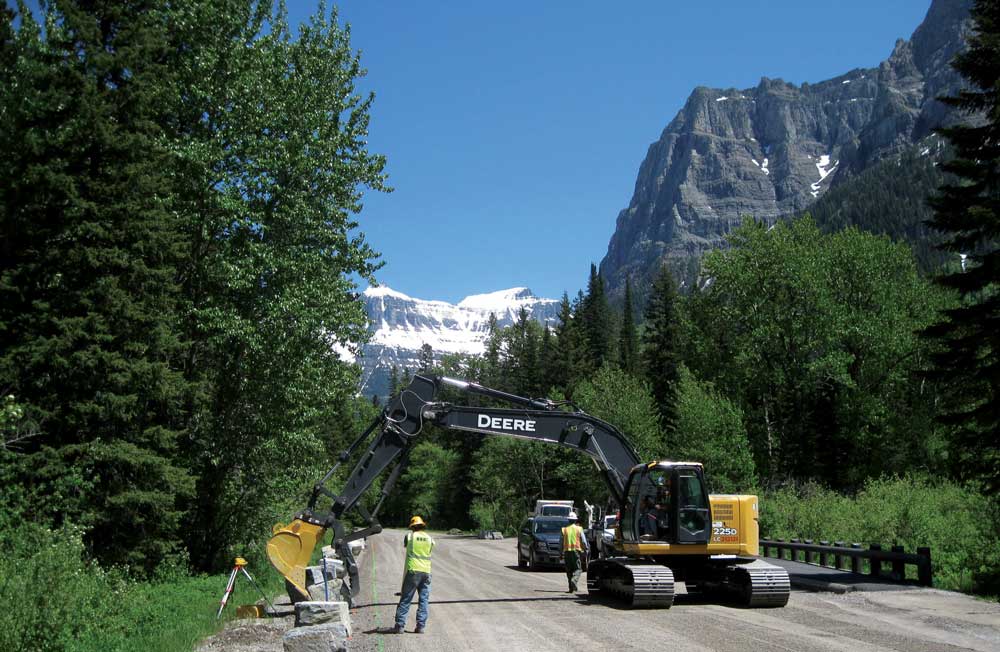It’s no secret that the National Park Service is in trouble when it comes to its $11.5 billion maintenance backlog, which spans roads, waste-water systems, and buildings within national parks, monuments, and recreation areas. With the agency’s centennial fast approaching in 2016, it’s time to seriously consider creative partnerships with the private sector to address the backlog and ensure parks are sustainable in their second century—not marred by chronic deterioration.
The National Park Service can look to states and local governments for inspiration on how to deal with their infrastructure challenges. Over the past several decades, cash-strapped state and local governments have turned to public-private partnerships to tap into private sector capital and expertise and to stretch limited dollars further. This means outsourcing maintenance activities to the private sector in order to lower costs.
The water and wastewater sector provides a good example. In 2014, the total size of the water and wastewater utility outsourcing market was nearly $2.1 billion, the vast majority of which came from contracts between the public and private sectors.
And the evidence suggests that it’s working. In the last decade alone, more than 3,200 public-private contracts for water or wastewater have come up for renewal, and 91 percent have been renewed, either with the incumbent or another private competitor. Only 3.6 percent have reverted back to government operation, suggesting that most public agencies are satisfied with their public-private partnerships.
In one recent deal, officials from Nassau County in New York signed a 20-year, $1.2 billion contract with United Water for the operation and management of the county’s three wastewater treatment facilities and sewage system, which serves a population of 1.2 million on Long Island. County officials expect to save at least $230 million over the life of the contract and improve the system’s operations and performance on environmental standards. United Water will be paid a flat fee of $57.4 million annually under the deal. The National Park Service should consider whether similar cost savings could be achieved by outsourcing the operations and maintenance of water and wastewater systems in some parks.
Public-private partnerships can also be used to bundle maintenance across multiple parks. A number of states, for example, have entered into performance-based maintenance contracts for roadways, covering all maintenance activities—repairs, signage, guardrails, and more—for highways within several districts or across entire agencies. Florida, Virginia, and Texas have led the way, using this approach to maintain highways and achieve significant cost savings. A 2009 Transportation Research Board report found that this type of bundled maintenance contracting can yield cost savings ranging from 10 to 40 percent.
There may also be ways to expand public-private partnership to attract an infusion of private capital in return for long-term asset operation and maintenance contracts. An interesting recent example of this approach comes from Pennsylvania’s Rapid Bridge Replacement Project, a partnership to reconstruct 558 structurally deficient bridges statewide in one fell swoop.
A private consortium is financing the $899 million project and will manage the design, construction, and maintenance of the bridges under one comprehensive contract to stream-line the project. The consortium will maintain each bridge for 25 years after completion and will be repaid by the state through an annual payment over that same time period to keep costs manageable.
By bundling the work, the state estimates the average per-bridge cost under this project will be $1.6 million, 20 percent less than it would cost under a more traditional approach. The contract model incentivizes proper maintenance, transfers major financial and long-term operational risks to the private partner, and ensures that the work is done now.
Public-private partnerships are certainly not unfamiliar to the National Park Service. After all, the major commercial services in some national parks—lodging, retail, food, and major recreational activities—are already operated under concession agreements with private sector partners. What’s being suggested here is simply extending and refining the concept to include non-commercial, infrastructure maintenance services as well.
These infrastructure public-private partnerships might look different in the national park context. Most municipal water and wastewater systems charge users directly for their services, and fuel taxes and tolls provide large amounts of transportation revenues. By contrast, most road, utility, and facility maintenance in national parks today are funded out of general operating revenues.
The National Park Service would need to think carefully about how much it could leverage existing revenue streams from entrance fees, concession revenues, and congressional appropriations to undertake projects, and whether additional sources of revenue might be possible in order to deploy more resources toward solving the maintenance problem.
No matter the total amount of maintenance dollars, public-private partnerships can provide a powerful means of stretching the funds further. It’s simply a matter of figuring out where to start. The agency could begin trying to assess the potential for infrastructure partnerships in a low-cost, low-risk way by issuing an open-ended request for information, seeking big-picture concepts from the private sector on how to tackle the maintenance backlog. This is a common starting point for state and local governments when they first dip their toes into the public-private partnerships waters. The Park Service can use the feedback from the private sector to refine their thinking and develop more concrete proposals.
Public-private partnerships cannot solve every problem, but many states and local governments have found that they can play an important role in improving infrastructure and driving better value for money. Given the National Park Service’s current state of disrepair—and the very real prospect that the system’s second century could be one of decline if nothing changes—all solutions should be on the table.




